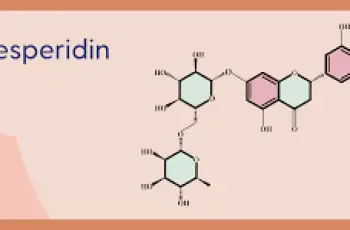
How to Wash Off Sunscreen Effectively Without Damaging Your Skin
Sunscreen is formulated to stay on your skin through sweat, water, and daily activity, so it’s not surprising that removing it can sometimes be a challenge.
Water-resistant and waterproof sunscreens are especially stubborn, particularly when used on the face or other sensitive areas that require extra care when cleansing.
Mineral sunscreens, which often contain zinc oxide or titanium dioxide, tend to cling tightly to the skin, making them equally hard to remove.
No matter your age—baby, toddler, child, teen, or adult—the basic advice remains consistent: cleanse gently and thoroughly to avoid skin irritation.
Use a gentle oil-based or foaming cleanser when removing sunscreen, as these formulas are more effective at breaking down stubborn sunscreen residues.
If you have eczema, rosacea, or generally sensitive skin, you need to be even more cautious and gentle when washing off sunscreen to avoid flare-ups.
Most sunscreens, especially chemical types, are made with oil-soluble ingredients, so they don’t easily wash away with just water or lightweight gel cleansers.
Cleansing oils, creamy cleansers, or soaps with oil content can dissolve these oily sunscreen ingredients far better than basic soap or micellar water alone.
Traditional soap and some foaming cleansers may strip the skin’s natural oils, which is problematic for babies, toddlers, or those with dry or delicate skin.
For these skin types, stick with oil-based options or creamy, non-stripping formulas that can lift away sunscreen without disturbing the skin barrier.
Micellar water and gel cleansers may be part of your routine, but they’re rarely effective for removing sunscreen unless used in a double cleanse method.
If you struggle with sensitive skin or rosacea, oil-based cleansers are usually the safest and most efficient way to break down sunscreen particles.
There are specialty cleansers created specifically to remove stubborn sunscreen, such as formulas developed to pair with certain mineral SPF products.
Some cleansers are designed to dissolve sunscreen without needing a follow-up wash, eliminating the need for a full two-step cleansing routine.
Still, the double cleanse method remains the most thorough way to ensure your skin is completely free of sunscreen residue before bed.
Begin with a cleansing oil to break down the sunscreen, then follow with a second cleanser suited for your specific Baumann Skin Type to finish the job.
Cleansing oils work because they follow the principle of “like dissolves like,” meaning oil-based products break down other oil-based substances effectively.
Most sunscreen actives are non-polar and resist water removal, but cleansing oils, which are also non-polar, can dissolve them more completely.
Using only water or a gel cleanser usually isn’t enough to dislodge these resilient sunscreen particles, especially from the pores and fine lines.
The best cleansing oil we recommend is the PCA Skin Daily Cleansing Oil, which is gentle, effective, and leaves no greasy residue behind.
You can also use household or natural oils like jojoba oil, baby oil, or argan oil as a first-step cleanser to loosen mineral sunscreen ingredients.
When applying the oil, use a soft cotton pad or cloth and gently massage it in circular motions to lift the sunscreen from your skin’s surface.
While this method won’t remove everything in one go, it makes the second cleanse far more effective and gentle on your skin.
Some popular oils for this process include ClarityRx Glimmer of Hope Shimmering Facial Oil, Murad Multi-Vitamin Infusion Oil, and PAORR Organic Moroccan Argan Oil.
Shea Terra MD 100% Pure Moroccan Argan Oil is also a great option if you’re looking for an organic and affordable oil to wash off sunscreen.
Mineral or physical sunscreens are designed to stay in place even when exposed to sweat, water, and friction, making them extra stubborn to remove.
These sunscreens contain zinc oxide or titanium dioxide, which are white pigments that tend to cling tightly to the skin’s outer layer.
To effectively remove these, always double cleanse—first with an oil cleanser, then with a water-based cleanser matched to your skin type.
This two-step method ensures all sunscreen is removed while protecting the skin’s moisture barrier and avoiding potential pore congestion.
In the first cleanse, the oil dissolves the sunscreen while also lifting dirt, sebum, and pollution that may have accumulated during the day.
In the second cleanse, a water-based cleanser rinses away the oil and remaining impurities, leaving your skin clean and ready for other skincare products.
If you’re not sure which cleanser suits your skin, take a quiz or consult a dermatologist to find the best match for your Baumann Skin Type.
For oily or acne-prone skin types, foaming cleansers are a great choice to follow up after an oil cleanse, especially for removing chemical sunscreens.
Some of the best foaming cleansers to remove sunscreen include La Roche-Posay Effaclar Purifying Gel, CeraVe Foaming Facial Cleanser, and Obagi CLENZIderm.
Other top options include EltaMD Foaming Facial Cleanser, Bioderma Sensibio Foaming Gel, and DefenAge 1-Step Multi-Cleanse for a complete cleansing solution.
These foaming cleansers are ideal for normal, oily, or acne-prone skin, but may be too drying for people with eczema, rosacea, or sensitive skin.
If you’re washing sunscreen off a baby, toddler, or someone with extremely delicate skin, use Shea Terra Argan Oil & Acacia Honey Facial Wash.
This facial wash is gentle, organic, and designed specifically to be safe for sensitive and fragile skin types, including children and infants.
Other suitable gentle cleansers for sensitive skin include CeraVe Hydrating Facial Cleanser and La Roche-Posay Toleriane Dermo Milky Cleanser.
Medature Plantract Cleansing Gel is another great option if you’re looking for a cleanser that’s effective yet soothing for reactive skin types.
For adults with normal skin who want a quick and effective sunscreen removal method, foaming cleansers are generally your best bet.
Some popular and effective choices include Nolio Foaming Cleanser and Filorga Foam Cleanser, both of which are designed to remove makeup and SPF.
These products also work well for removing sunscreen from the body—not just the face—especially after a day outdoors or at the beach.
It’s important to wash off sunscreen before bed to avoid buildup, clogged pores, or breakouts that can occur if you leave SPF on overnight.
If sunscreen isn’t removed, it can trap sweat, dirt, and oils, leading to blackheads, whiteheads, and other forms of acne or skin congestion.
Some sunscreens contain silicones or film-formers that sit on the skin and must be fully washed away to prevent skin irritation or milia.
That’s why washing your face twice at night—especially when you wear sunscreen daily—is a simple habit that goes a long way in keeping your skin healthy.
Removing sunscreen may seem like a chore, but it’s a crucial step in any skincare routine to maintain clear pores, smooth texture, and balanced hydration.
Whether you’re dealing with stubborn zinc oxide sunscreen or just want to prevent buildup, a double cleanse can make a big difference in skin clarity.
By incorporating the right cleanser combination into your routine, you can remove even the most stubborn sunscreen layers without stripping your skin.
Always choose products that match your skin type and lifestyle, and don’t hesitate to try oil cleansing if you’re struggling with removing sunscreen completely.
Healthy, clean skin starts with an effective yet gentle cleansing routine, and removing sunscreen properly is a key part of that foundation.
If you found this guide helpful, use the one-time code “STSBlog20” at checkout for 20% off anything in our skincare store to support your healthy skin journey.
With the right cleansers and consistent habits, you’ll be able to wear sunscreen daily without worrying about buildup, irritation, or breakouts.
Protecting your skin with SPF is important—but removing it correctly is just as essential for achieving long-term skin health and radiance.
Now that you understand how to wash off sunscreen properly, you can confidently build a skincare routine that keeps your skin clean, clear, and protected.


